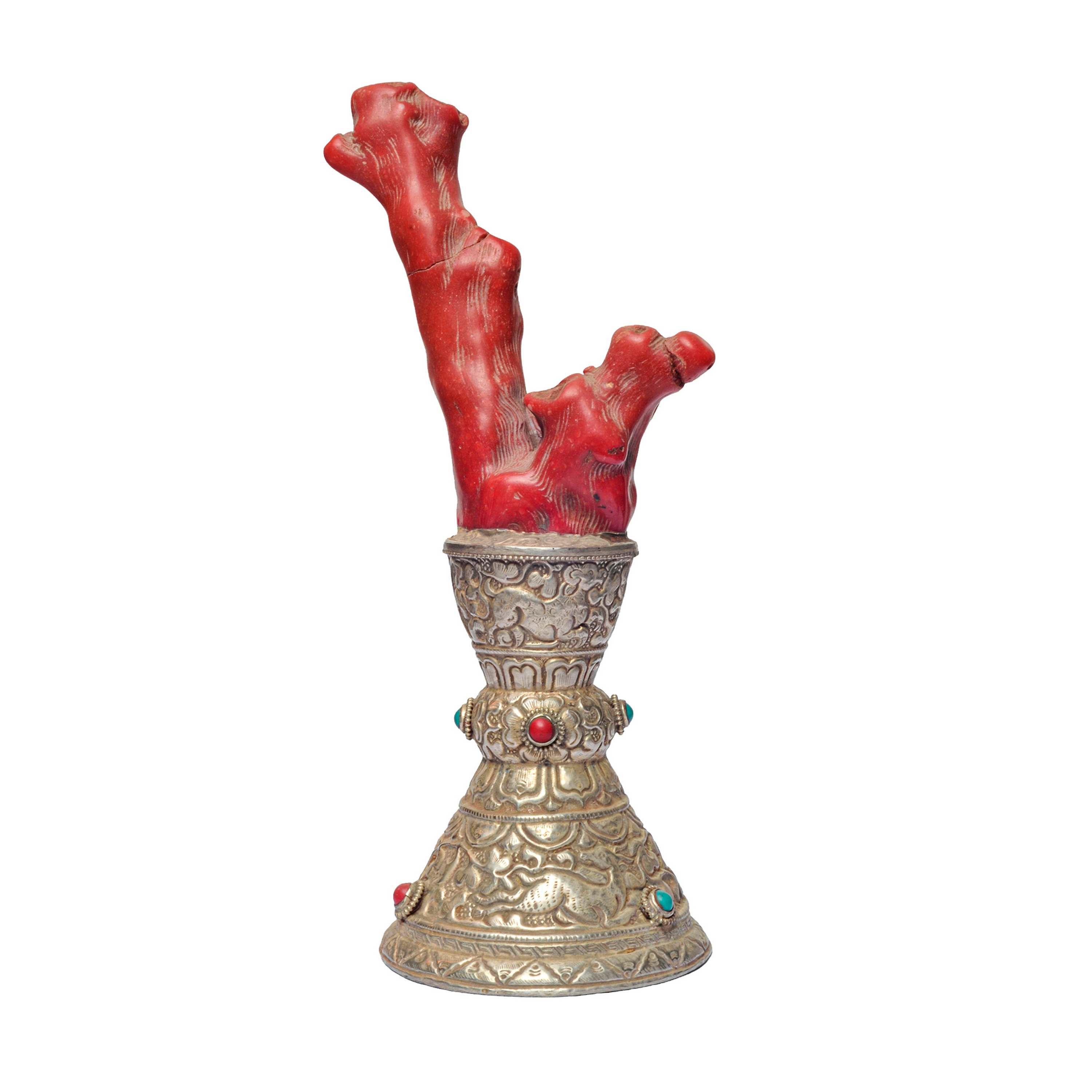Tibetan Stamp
Tibetan stamps with metal settings are beautiful and unique tools for creating intricate designs on paper, fabric, or other surfaces. These stamps are made of high-quality brass or other metals and are designed with intricate Tibetan motifs, such as the endless knot, lotus flower, or the eight auspicious symbols.
The stamps are typically mounted on a wooden handle, making them easy to use and maneuver. The metal setting on the stamps ensures that they are durable and long-lasting, allowing for repeated use over time.
Read More
When using Tibetan stamps, you can create beautiful and intricate designs on a variety of surfaces, including paper, cloth, leather, or even walls. These stamps can be used for a variety of crafts, such as scrapbooking, card-making, or even for creating beautiful designs on clothing or home decor items.
In addition to their practical uses, Tibetan stamps with metal settings also have cultural significance. They are an expression of traditional Tibetan art and symbolism, and many of the designs have deep spiritual meanings within the Tibetan Buddhist tradition.
Overall, Tibetan stamps with metal settings are a unique and beautiful addition to any crafter's toolkit. They allow for the creation of intricate designs that reflect both the beauty of Tibetan culture and the creativity of the individual using them.
what is metal setting
The metal setting process is a traditional technique used to decorate Buddhist ritual objects and statues. It involves hammering metal, such as copper or brass, into relief designs and then finishing the metal with gold or silver plating. The process also includes adding stone settings for additional embellishment. This technique has been used for centuries and originally served the purpose of protecting objects from damage.
The process starts with hammering the metal into relief designs, which are then finished with gold or silver plating. This not only adds a decorative element but also protects the metal from tarnishing and damage. Additionally, the metal setting process can be enhanced by adding stone settings such as precious stones, which add an additional layer of beauty and exclusivity to the final piece.
Over time, the metal setting process has evolved into an art form used to create exclusive and ornate pieces. It is a highly skilled craft that requires a high degree of precision and is often used to create objects of religious significance, such as statues of deities and ritual objects used in Buddhist ceremonies. It is an essential aspect of traditional Buddhist art and continues to be valued and respected for its intricate and detailed nature.
Read More
Silver Plated
The Tibetan Stamp has a full Silver plated finish, Sliver plating process involves the application of a thin layer of genuine silver onto the surface of the Tibetan Stamp, creating a stunning and lustrous appearance. Skilled artisans handle the silver plating, ensuring even coverage and a flawless finish. The silver plating adds a touch of elegance and sophistication to the Tibetan Stamp, enhancing its overall aesthetic appeal.
WHAT'S THE SILVER PLATING PROCESS?
Silver plating is valued for its durability and ability to resist tarnishing, allowing the Tibetan Stamp to maintain its radiant shine for an extended period. The silver-plated finish also offers versatility, complementing various design styles and adding a touch of refinement to any setting.
By choosing the Tibetan Stamp with a silver plated finish, you can enjoy the timeless beauty and allure of silver, creating an exquisite and eye-catching piece that is sure to captivate.
The silver plating process steps are relatively straightforward, although they differ depending on what type you're doing — barrel or rack plating. The basic strategy, however, goes like this:
Inspection: Before electroplating, you should always check the part for imperfections — like cold shuts or sharp edges — and amend these issues before starting the process. Otherwise, the quality of the substrate will decrease, and this may cause problems for your customers.
Pre-treatment: Complete any necessary treatments before plating onto your metal part. You should also do an under-plating of copper, nickel or both metals. Additionally, you can add a silver strike or an anti-tarnish coating if there's a particular effect you want to achieve. If you plate a layer of nickel or copper with a 0.0005-inch thickness, the silver should also be 0.0005 inches for a total of 0.0010 inches.
Electroplating: Silver plating involves submerging the substrate into a bath of silver ions. After passing an electric current through the solution, the ions deposit onto the part's surface, coating it in your chosen metal — in this case, silver.
Read More
Finishing: Stone Setting
The Tibetan Stamp is adorned with an exquisite array of semi-precious stones, including turquoise, coral, and lapis lazuli. These stones are carefully selected and meticulously placed on the Tibetan Stamp's surface, adding a touch of opulence and enhancing its overall beauty. Each stone is thoughtfully positioned using a high-quality adhesive, ensuring secure and long-lasting attachment. The vibrant colors and unique patterns of the stones create a captivating contrast against the backdrop of the Tibetan Stamp, elevating its visual appeal and making it truly eye-catching.
Beyond their decorative purpose, these semi-precious stones carry symbolic significance in various cultures and traditions. Turquoise is often associated with protection and healing, coral represents vitality and passion, while lapis lazuli symbolizes wisdom and truth. The inclusion of these stones not only adds to the aesthetic allure of the Tibetan Stamp but also imbues it with deeper meaning and cultural symbolism.
The intricate placement of these semi-precious stones showcases the meticulous craftsmanship and attention to detail that goes into the creation of the Tibetan Stamp. It is a testament to the skill and artistic vision of the artisans who delicately adorn the statue, resulting in a truly remarkable and captivating piece of art.
Read More
